Teacher: Your Main Objective Is To Work Hard In This Class.
Teacher: Your main objective is to work hard in this class.
Me:

More Posts from Lilhaileyfoofoo and Others
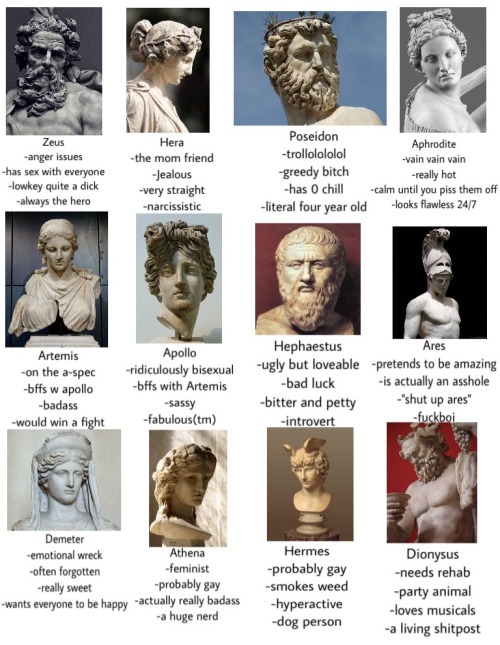
Tag yourself I’m Athena
Naming a South Asian Character
“I need a name for a South Asian character”
We’re going to need a little more information than that…
Please see the following maps of South Asia:


Image description: Two maps of South Asia. The top map depicts the South Asian region, including Afghanistan with color-coding of different regions by 8 color-coded language groups. The bottom depicts the official state/ province/ languages and scripts for countries in the South Asian region, excluding Afghanistan. See end of post for detailed image description under the cut.
(Links: Top Map, Bottom Map)
That’s a lot of languages, right?
Names in South Asian cultures are primarily dictated by religion and language. While there’s some overlap between cultures, we can make an educated guess of someone’s ethnicity & religion based on their name. For example:
Simran Dhillon … is a Punjabi Sikh.
Priyanka Ghosh … is a Bengali Hindu
Maya Srinivasan … is a Tamilian Hindu.
Harsh Patel … is a Gujarati Hindu.
Amin Usmani … is a Muslim from a traditionally Urdu speaking community.
Teresa Fernandes … is a Goan Christian.
Behind the Name is a good place to start looking as they state the specific language the name is from. As for religion, there are more factors to consider.
Sikhs
Sikh first names are gender neutral. The 10th Sikh guru designated Singh (meaning lion, for men) and Kaur (meaning heir to the throne, for women) as Sikh surnames. These surnames were designed to be equalizers within Sikh communities. However, many Sikhs keep their Punjabi surnames (many of these surnames are now primarily associated with Sikhs) and use Singh and Kaur as a middle name (eg. Ranjit Kaur Shergill, Amrit Singh Cheema). More devout Sikhs use only Singh and Kaur or use the same format legally but do not share their surnames.
Sikh first names are derived from gurbani (Sikh holy texts), so they are often uniform across cultures. Most Sikhs who aren’t Punjabi use Singh & Kaur or cultural surnames in the same format. The latter is usually seen among Afghan & Delhiite Sikh communities. While most changed their surnames to Singh & Kaur, some families still kept the surnames they had before they converted from Islam and Hinduism (eg. Harpreet Singh Laghmani, Jasleen Kaur Kapoor).
If you’re stuck on a surname for a Sikh character, Singh for men and Kaur for women is the safest way to go regardless of ethnicity.
Good resources for Sikh names can be found here:
https://www.sikhs.org/names.htm
http://www.sikhwomen.com/SikhNames/
Christians
South Asian Christians naming conventions depend largely on who brought Christianity to the region and when. For example, Christianity was largely brought to Goa by Portuguese Catholics so you’ll see Portuguese surnames, while many Christians in the Seven Sister States didn’t change their names. South Asian Christians will also often have Christian first names, either in Portuguese or in English.
Hindus, Jains, castes and gotras
Hinduism is the majority religion in India and the South Asian region overall. A key thing that many newcomers overlook when writing about Hindus is that rather like feudal Europe, a person’s last name can also tell you what their family used to do because of the caste system. Both Hindus and Jains employ gotras (or lineage systems) designed to keep people from the same patrilineal line from marrying each other. Thus, if your Hindu character is a Vaishya (tradesman/ merchant class), but you have chosen a last name for them related to farming, or if your Kshatriya (warrior) character has a last name that means bureaucrat, you’ve made a mistake. Most Hindus and Jains will have last names derived from Sanskrit, or a language with Sanskrit roots.
A note on middle names: in South India, Hindus will often use the father’s first name for the child’s middle name.
For what it is worth, South Asia is hardly the only region to have these particular features. Japanese society until the end of the Edo era was heavily segregated by caste, and to this day, many families with samurai last names occupy relative positions of privilege compared to other castes, even though the Japanese caste system ended with the Meiji Restoration.
A note of caution: Baby name websites tend to be inaccurate for Hindu names, often confusing Farsi and Arabic-derived Urdu names with the more traditional Sanskrit-derived names. Behind the Name is by far the most accurate website, but it doesn’t hurt to check multiple sources. For Hindu and Jain surnames associated with different castes, regions and gotras, Wikipedia is surprisingly thorough.
Muslims
Islam is the majority religion in Pakistan and Bangladesh as well as the second largest religion in India, but the differing ethnicities and arrival periods of Muslims in South Asia over the course of history can have a significant impact on a character’s name. For example, think of when your character’s family will have arrived in South Asia or converted to Islam:
During the Delhi Sultanate, when Hindustani would have been spoken?
Under the Mughals when Persian was more common?
Are they from Bangladesh and thus speak Bengali?
Do they have ancestors from Afghanistan or Swat Valley, and thus have Pashto last names?
Does the family speak Urdu?
All of these will impact what their name might reasonably be. As a general rule, Muslims will have last names that are in Farsi/ Persian, Urdu, Arabic and Bengali. Bangladeshi Muslims may have Hindu names (both first and last) as well.
Buddhists
When discussing Buddhists in South Asia, we are primarily talking about Nepal and Sri Lanka. The majority languages in these countries are Nepali and Sinhala, respectively. Both languages are part of the Indo-Aryan language family, and like many Indo-Aryan languages, show heavy Sanskrit influence.
Others
Don’t forget that India also has a large number of lesser known minority religions, including Judaism, Zoroastrianism, Tibetan Buddhism and a host of indigenous religions.
Judaism: There are a number of historical Jewish enclaves in India, as the result of specific waves of migration. Like South Asian Muslim names, Jewish last names will vary depending on the ethnicity and arrival period for each particular wave of Jewish diaspora.
Zoroastrianism: People who practice Zoroastrianism are likely to have Farsi last names.
Tibetan Buddhism: Tibetan Buddhists will obviously have Tibetan names and are often a part of the Tibetan diaspora who entered India as refugees during the Chinese government’s invasion of Tibet.
In Conclusion
An in-depth coverage of name etymology in South Asia would probably be the size of an encyclopaedia. The above is hardly exhaustive; we haven’t scratched the surface of the ethnic and linguistic variations in any of the South Asian countries displayed on the maps above. We hope, however, that it motivates you to research carefully and appreciate the cultural diversity South Asia has to offer. Just like in any setting where issues of lineage are plainly displayed by a person’s name, names in South Asia tell stories about where a person is from, what language they speak, and what their ancestors might have done, even if this has little bearing on the character themselves. It may seem a little elaborate to try and imagine the ancestors of your character before you even decide who your character is, but the reality is that most South Asians know these things instinctively, and whether or not you do your due diligence will be part of how we judge your work.
Name a thing to fight over, and South Asians have probably fought over it at one point or another, whether it be religion, ethnicity, language, or caste. However, one thing many South Asians have in common is pride in our individual origins. Respecting this love of identity will be invaluable as you plan your story.
At the end of the day, there is no substitute for actually talking to people who share your character’s background. We will always recommend having someone from the community you’re writing about check your naming.
– Mods SK and Marika
Keep reading
If you listen, her tapping very much adds to the music.
I really hate the Western take on Eastern philosophies & symbols.
No, yin yang is not good vs. evil or even the balance of good & evil. No, karma is not that cunt who cut you off getting what’s coming to her. No, zen is not a day at the spa with cucumbers on your face. No, yoga is not being able to fit in your skinny jeans after a good workout. No, buddhism is not going on yoga retreats. asffffkkdjjj%^&#$%
Disabled people who can walk short distances should not have to fear parking in a disabled space and walking into a store.
Disabled people in wheelchairs should not have to fear moving their legs or briefly standing up.
Disabled people should not have to fear using a cane on their bad days.
Disabled people shouldn’t have to feel weary about having too much fun and being seen enjoying themselves.
Disabled people shouldn’t have to live in fear of getting attacked, getting called a fake and even getting reported for benefit fraud just because they don’t fit the ableist profile of what you think a disabled person looks like and acts like.
Disabled people deserve to be able to safely leave the house and live our lives without fear and judgment.
HEY THIS IS IMPORTANT whats your favorite place to find drawing references?
I feel like the best lesson my beginning illustration professor taught me was when he had us do a still life sketch in charcoal for a few minutes- then told us all to erase it, switch seats, and sketch over the same drawing we just erased. He said something that left an impression on me, though I'll have to paraphrase cuz its been several years.
"You guys really need to get over the idea that everything you draw is gonna be perfect. When I said erase the sketch, I meant erase it completely; its not your masterpiece. You're in this class to practice. Stop thinking that you have to get it right in one go, or trying over and over to fix a sketch that isn't working for you. You're a godamn artist, you can just make another sketch. You need to start believing that your art isn't just a fluke, and that you're skilled enough to make more at any time."

More often than not I’ll crack into a sprawling fantasy series and, while I appreciate the luscious descriptions of furniture, landscapes, and clothing, all I’m focused on is that I don’t actually know how this world works. I only know what it looks like.
Including some functionality to your universe can add to immersion and give your reader a strong foundation on which to build their mental model of your universe.
You certainly don’t need to use all of these questions! In fact, I recommend against that, as all of these certainly won’t make it into your final draft. I personally find that starting my worldbuilding off with 5 to 10 functional questions helps pave the way for glittery and elaborate aesthetic development later on.

How is the healthcare funded in your world?
How does healthcare functionally differ between the wealthy and the poor? (i.e. can only the wealthy go to hospitals? do poor families often have to rely on back-alley procedures?)
Where are health centers (i.e. hospitals, small clinics, etc.) organized in your cities?
Does it differ in smaller towns?
How does this affect people’s ability to get healthcare?
Is healthcare magical, and if it is, how does that affect the healthcare system?
If healing is instantaneous, how does that affect people’s views on injury, illness, and chronic ailments?
If you have both magical and physical healthcare, which one is deemed superior and how does that affect society?
What illnesses are common in your world?
How does this affect daily life?
What do the people in your world think illnesses are?
Is it a miasma theory?
Humor theory?
Demons?
Do they know about biological viruses and bacteria?
How does this affect healthcare?

How do people get water?
Is the water sanitary and if not, how do they sanitize it?
How does agriculture work?
Is it large corporations or individual farms?
What sort of agricultural technology exists in your world and how does it affect food production?
Are farmers wealthy or poor?
What sort of natural resources does your world/country(ies) have and how are they obtained?
How does this affect the average wealth of the country?
How does this wealth affect the culture?
What livestock or beasts of burden are most valued? Least valued? Why?
What is considered a luxury good vs. a regular good?

What forms of transportation does your world have?
What classes use what forms of transportation?
How far has the average citizen traveled, given your transportation limitations?
Which cities are the most accessible and which are the least? Why?
How do popular transportation methods change how cities/towns are laid out?
Does your world have public transportation? What is it?
Is there a coming-of-age aspect to travel?
Describe your world’s postal system or whatever equivalent there is.
Who pays for it?
How reliable is it?
Are there emergency methods for transporting information?

How does your world keep time (i.e. watches, sundials, water clock, etc.)?
Does your world have a currency system, barter system, or something else?
If you have multiple countries, do different currencies have different values across said countries?
How does this affect travel?
Do you have banks in your world and if so, how are they run?
Who owns the banks? Government? Wealthy? How does this affect the economy and/or class system?
How does credit operate in your universe?
Does your world operate more on big corporations or small business? Something in between?
How are workers/labourers treated in your world?
Are there workers unions and if so, what are common views on unions?
Describe your tax system. If you don’t have a tax system, explain why and how your world is affected by that.
Can certain social classes not own property, certain livestock, certain businesses, etc.? Why?
How are business records kept? Are business records kept?
If your world has technology, does your world prioritize developing entertainment tech, communications tech, transportation tech or something else entirely?
What does this say about your world?
How does this affect your economy?

To the closest approximation, what type of government does your world have?
How are rulers/presidents/nobles put in place?
How much power does an individual ruler have?
Is there a veto process?
If you have multiple countries, do they have different types of rulers?
Describe any large-scale alliances (i.e. countries, factions, etc.) that are present in your world.
How did they come about and how are they maintained?
Are they strained or peaceful?
How does it affect the greater politics of your world?
Describe how wars are fought both internationally and nationally.
Do methods of war differ between countries/races?
What about philosophies about war?
If there is a military, what is its hierarchy structure?
How does the military recruit?
Is the military looked upon favourably in your society?
What weapons are used by each country/type of people during warfare, and how does that affect war strategies?
Describe the sentencing system of your world.
Is your accused innocent until proven guilty, or guilty until proven innocent?
How are lawbreakers punished?
If you have prisons, describe how they are organized and run, and who owns them.
Does differing ownership change how the prisons operate?
What are the major ways in which laws between countries vary?
Do laws between cities vary? If so, how and why?
How does citizenship work in your world? What rights and privileges do citizens have that others do not?
Can certain classes or races not become citizens?
Are there certain taboo subjects or opinions that artist/authors/musicians are not allowed to depict (i.e. portraying the official religion in a negative light, explicit sexual material, etc.)? What does this say about your society?
How do people get around these censorship laws?
What is the official hierarchy of duty in your world? (i.e. is family the most important, or patriotism? What about clan?)
How many languages are there in your world, and how many languages share a common origin?
How many people are multilingual?
Which language is the most common?
How is multilingualism viewed?
How are different languages viewed? (i.e. is one language ugly/barbaric while another is romantic and sensual?)
Feel free to add your own questions in reblogs or in comments!
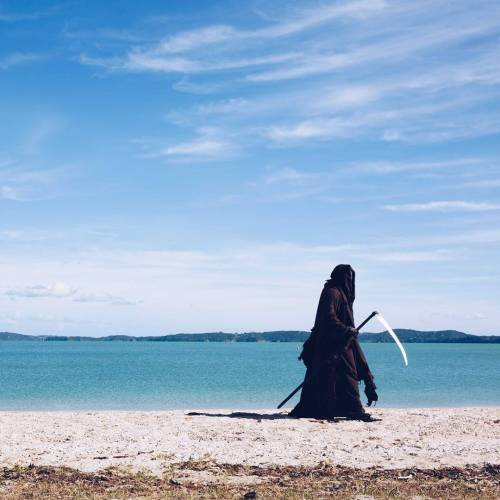
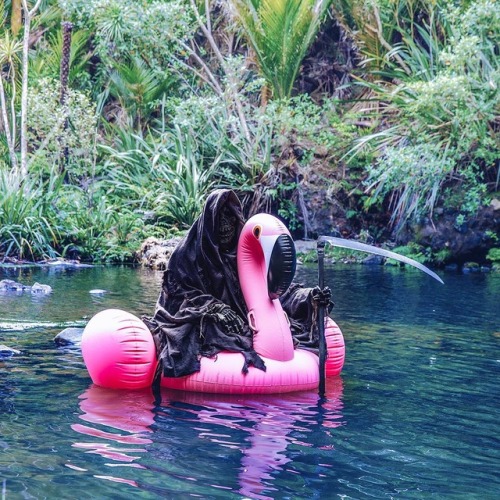
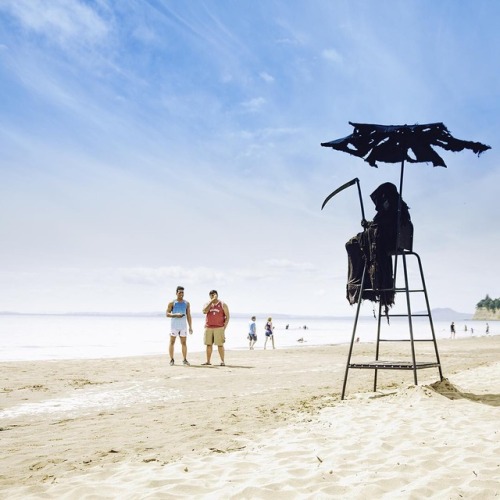
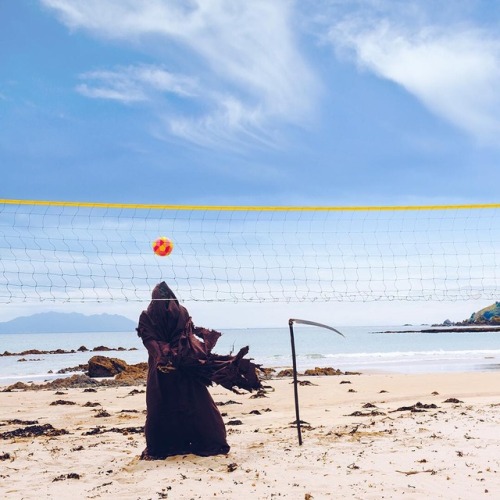
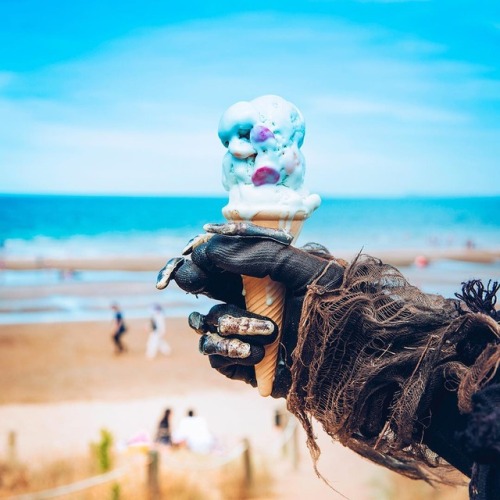
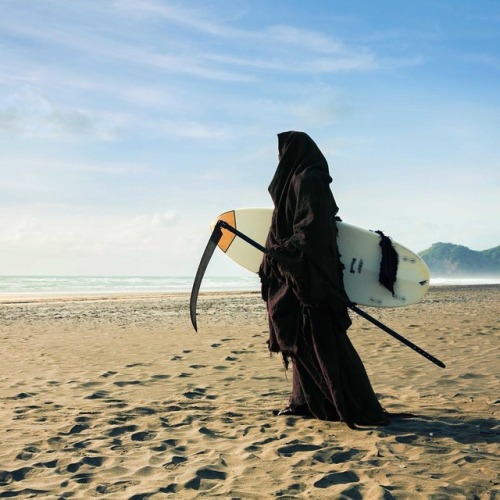
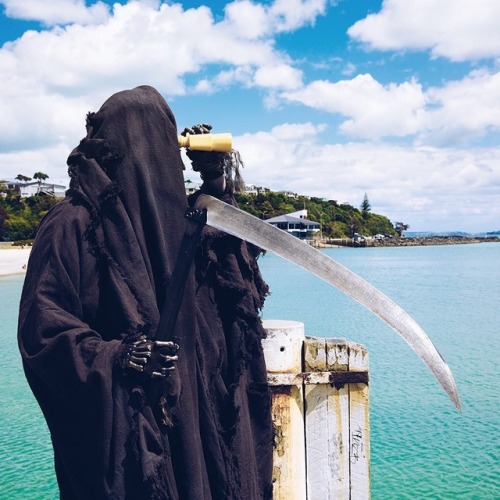
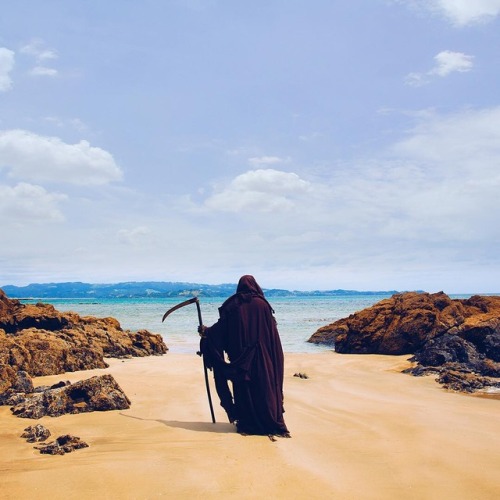

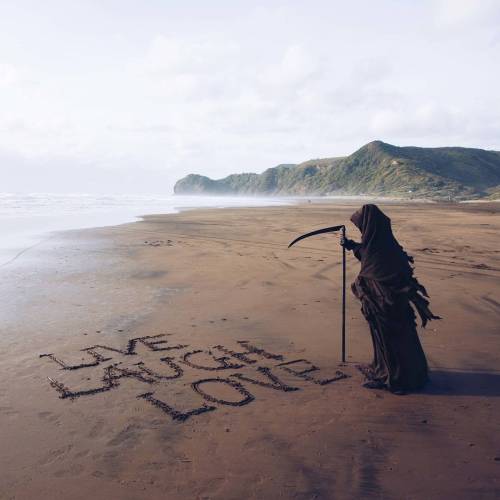
New Zealand’s new water safety mascot is amazing and his instagram is a gift
Resources For Writing Sketchy Topics

Medicine
A Study In Physical Injury
Comas
Medical Facts And Tips For Your Writing Needs
Broken Bones
Burns
Unconsciousness & Head Trauma
Blood Loss
Stab Wounds
Pain & Shock
All About Mechanical Injuries (Injuries Caused By Violence)
Writing Specific Characters
Portraying a kleptomaniac.
Playing a character with cancer.
How to portray a power driven character.
Playing the manipulative character.
Portraying a character with borderline personality disorder.
Playing a character with Orthorexia Nervosa.
Writing a character who lost someone important.
Playing the bullies.
Portraying the drug dealer.
Playing a rebellious character.
How to portray a sociopath.
How to write characters with PTSD.
Playing characters with memory loss.
Playing a pyromaniac.
How to write a mute character.
How to write a character with an OCD.
How to play a stoner.
Playing a character with an eating disorder.
Portraying a character who is anti-social.
Portraying a character who is depressed.
How to portray someone with dyslexia.
How to portray a character with bipolar disorder.
Portraying a character with severe depression.
How to play a serial killer.
Writing insane characters.
Playing a character under the influence of marijuana.
Tips on writing a drug addict.
How to write a character with HPD.
Writing a character with Nymphomania.
Writing a character with schizophrenia.
Writing a character with Dissociative Identity Disorder.
Writing a character with depression.
Writing a character who suffers from night terrors.
Writing a character with paranoid personality disorder.
How to play a victim of rape.
How to play a mentally ill/insane character.
Writing a character who self-harms.
Writing a character who is high on amphetamines.
How to play the stalker.
How to portray a character high on cocaine.
Playing a character with ADHD.
How to play a sexual assault victim.
Writing a compulsive gambler.
Playing a character who is faking a disorder.
Playing a prisoner.
Portraying an emotionally detached character.
How to play a character with social anxiety.
Portraying a character who is high.
Portraying characters who have secrets.
Portraying a recovering alcoholic.
Portraying a sex addict.
How to play someone creepy.
Portraying sexually/emotionally abused characters.
Playing a character under the influence of drugs.
Playing a character who struggles with Bulimia.
Illegal Activity
Examining Mob Mentality
How Street Gangs Work
Domestic Abuse
Torture
Assault
Murder
Terrorism
Internet Fraud
Cyberwarfare
Computer Viruses
Corporate Crime
Political Corruption
Drug Trafficking
Human Trafficking
Sex Trafficking
Illegal Immigration
Contemporary Slavery
Black Market Prices & Profits
AK-47 prices on the black market
Bribes
Computer Hackers and Online Fraud
Contract Killing
Exotic Animals
Fake Diplomas
Fake ID Cards, Passports and Other Identity Documents
Human Smuggling Fees
Human Traffickers Prices
Kidney and Organ Trafficking Prices
Prostitution Prices
Cocaine Prices
Ecstasy Pills Prices
Heroin Prices
Marijuana Prices
Meth Prices
Earnings From Illegal Jobs
Countries In Order Of Largest To Smallest Risk
Forensics
arson
Asphyxia
Blood Analysis
Book Review
Cause & Manner of Death
Chemistry/Physics
Computers/Cell Phones/Electronics
Cool & Odd-Mostly Odd
Corpse Identification
Corpse Location
Crime and Science Radio
crime lab
Crime Scene
Cults and Religions
DNA
Document Examination
Fingerprints/Patterned Evidence
Firearms Analysis
Forensic Anthropology
Forensic Art
Forensic Dentistry
Forensic History
Forensic Psychiatry
General Forensics
Guest Blogger
High Tech Forensics
Interesting Cases
Interesting Places
Interviews
Medical History
Medical Issues
Misc
Multiple Murderers
On This Day
Poisons & Drugs
Police Procedure
Q&A
serial killers
Space Program
Stupid Criminals
Theft
Time of Death
Toxicology
Trauma
-
 microwavedmaggot liked this · 5 years ago
microwavedmaggot liked this · 5 years ago -
 timesreading liked this · 5 years ago
timesreading liked this · 5 years ago -
 hostgalli19 reblogged this · 5 years ago
hostgalli19 reblogged this · 5 years ago -
 hostgalli19 liked this · 5 years ago
hostgalli19 liked this · 5 years ago -
 medicwnatspie liked this · 6 years ago
medicwnatspie liked this · 6 years ago -
 emogeekuniverse liked this · 6 years ago
emogeekuniverse liked this · 6 years ago -
 nydacthings liked this · 6 years ago
nydacthings liked this · 6 years ago -
 0-chaotic-potato-0 liked this · 6 years ago
0-chaotic-potato-0 liked this · 6 years ago -
 misstakebunny reblogged this · 6 years ago
misstakebunny reblogged this · 6 years ago -
 drakenaa liked this · 7 years ago
drakenaa liked this · 7 years ago -
 cmaniac123 liked this · 7 years ago
cmaniac123 liked this · 7 years ago -
 dank-spaces reblogged this · 7 years ago
dank-spaces reblogged this · 7 years ago -
 dank-spaces liked this · 7 years ago
dank-spaces liked this · 7 years ago -
 youtube-gamer reblogged this · 7 years ago
youtube-gamer reblogged this · 7 years ago -
 youtube-gamer liked this · 7 years ago
youtube-gamer liked this · 7 years ago -
 uraniasymphony liked this · 7 years ago
uraniasymphony liked this · 7 years ago -
 polygoon liked this · 7 years ago
polygoon liked this · 7 years ago -
 oc-chan14 liked this · 7 years ago
oc-chan14 liked this · 7 years ago -
 yannabooger reblogged this · 7 years ago
yannabooger reblogged this · 7 years ago -
 yannabooger liked this · 7 years ago
yannabooger liked this · 7 years ago -
 killingthisaccount reblogged this · 7 years ago
killingthisaccount reblogged this · 7 years ago -
 killingthisaccount liked this · 7 years ago
killingthisaccount liked this · 7 years ago -
 risiskifi reblogged this · 7 years ago
risiskifi reblogged this · 7 years ago -
 risiskifi liked this · 7 years ago
risiskifi liked this · 7 years ago -
 darkfox-2018 liked this · 7 years ago
darkfox-2018 liked this · 7 years ago -
 bluebirdiesong liked this · 7 years ago
bluebirdiesong liked this · 7 years ago -
 nate-mare reblogged this · 7 years ago
nate-mare reblogged this · 7 years ago -
 nate-mare liked this · 7 years ago
nate-mare liked this · 7 years ago -
 spirit-ruin liked this · 7 years ago
spirit-ruin liked this · 7 years ago -
 micaydence liked this · 7 years ago
micaydence liked this · 7 years ago -
 american-horror32 liked this · 7 years ago
american-horror32 liked this · 7 years ago -
 jackbrakkow-asknreplies liked this · 7 years ago
jackbrakkow-asknreplies liked this · 7 years ago -
 wilting13 reblogged this · 7 years ago
wilting13 reblogged this · 7 years ago -
 wilting13 liked this · 7 years ago
wilting13 liked this · 7 years ago -
 riftodyssey reblogged this · 7 years ago
riftodyssey reblogged this · 7 years ago -
 riftodyssey liked this · 7 years ago
riftodyssey liked this · 7 years ago -
 theshymel liked this · 7 years ago
theshymel liked this · 7 years ago -
 my-ships-are-better-than-yo-blog liked this · 7 years ago
my-ships-are-better-than-yo-blog liked this · 7 years ago -
 brogeo54-blog liked this · 7 years ago
brogeo54-blog liked this · 7 years ago -
 protegoparacosm liked this · 7 years ago
protegoparacosm liked this · 7 years ago -
 adreamoverlife liked this · 7 years ago
adreamoverlife liked this · 7 years ago -
 finallysignedupforthis liked this · 7 years ago
finallysignedupforthis liked this · 7 years ago -
 crankypliers-blog reblogged this · 7 years ago
crankypliers-blog reblogged this · 7 years ago -
 crankypliers-blog liked this · 7 years ago
crankypliers-blog liked this · 7 years ago

I mostly reblog writing and art related resources here. BLMMy main account is FoofsterRoonie. My art blog is FoofsterArtAnd my writing blog is Foofsterwriting:)
197 posts